Dielectric shell regulation in synergy FeCoNi@ZnIn2S4 microspheres with broadband electromagnetic wave absorption
Abstract
Core-shell structure and magnetic-dielectric coupling in functional composites are important factors for obtaining excellent electromagnetic (EM) wave absorption performance, but they also face challenges. In this study, magnetic FeCoNi and dielectric ZnIn2S4 were combined to form unique core-shell structured microspheres. The morphology characteristics, EM parameters, and absorption performance of FeCoNi@ZnIn2S4 composites with different annealing temperatures were investigated to reveal impedance matching and synergistic absorption mechanisms. Those results show that FeCoNi@ZnIn2S4-600 (FCNZ-600) has excellent EM wave absorption properties, with the minimum reflection loss (RLmin) of -52.4 dB at 1.9 mm and the efficient absorption bandwidth of 6.08 GHz at 1.53 mm, which achieves broadband absorption. Core-shell magnetic-dielectric design provides a new perspective in efficient EM wave absorption systems.
Keywords
INTRODUCTION
Recently, the progress of modern electronic and wireless communication technologies is generating excellent electromagnetic (EM) radiation, resulting in significant pollution that disrupts the functionality of electronic systems and poses substantial risks to human health and ecological stability[1-6]. As a result, EM wave absorption materials have become a research hotspot with particular emphasis on achieving efficient broadband absorption, which remains a critical challenge in the field[7-10].
Among those diverse EM wave absorption materials, magnetic-dielectric synergistic composites integrate the benefits of both magnetic and dielectric components to achieve superior absorption performance[11,12]. The magnetic component induces magnetic loss, while the dielectric component contributes to dielectric loss[13-15]. The synergistic magnetic-dielectric effect has enabled multiple loss mechanisms, thereby significantly enhancing the material’s EM wave attenuation capacity and achieving a more effective absorption outcome[16,17].
Core-shell EM wave absorption materials with specialized heterojunction interfaces offer distinct advantages, providing a synergistic loss effect to dissipate the incident energy[18,19]. This interface features unique electronic structures and physicochemical properties that generate various specific response behavior, thereby broadening the effective absorption bandwidth[20,21]. Core-shell structured materials present novel strategies in advanced EM wave absorption. Numerous studies have documented that the core-shell magnetic-dielectric composites with enhanced absorption performance, integrating magnetic materials (alloys, Fe3O4, ferrites, and MOFs-derivatives) with dielectric components of choice, including transition metal sulfides, carbides, and polymers, such as CoFe@C@C[22], CNC/Fe3O4@C[23], ZnFe2O4@PPy[24], and CoFe2O4@Fe3C@NiO[25].
In this study, magnetic FeCoNi and dielectric ZnIn2S4 were combined to construct core-shell structured microspheres with magnetic-dielectric synergy, utilizing chemical reduction, oil bath, and in-situ annealing techniques to achieve tunable EM properties. The selection of magnetic components focused on FeCoNi alloys, which are well-known magnetic materials with high saturation magnetization and permeability, leading to significant magnetic loss and a strong magnetic response to EM wave[26]. In contrast, the choice of dielectric shell components has predominantly centered on binary transition metal sulfides, such as
EXPERIMENTAL
Chemicals and reagents
Ferrous sulfate (FeSO4·7H2O), zinc chloride (ZnCl2), thioacetamide (C2H5NS), sodium hydroxide (NaOH), glycerol (C3H8O3) and hydrazine hydrate (N2H4·H2O) were purchased from Sinopharm Chemical Reagent Co., Ltd., cobalt (II) chloride hexahydrate (CoCl2·6H2O), nickel (II) chloride hexahydrate (NiCl2·6H2O), were got from Shanghai Aladdin Biochemical Technology Co., Ltd., Indium (III) chloride tetrahydrate (InCl3·4H2O) was got from Shanghai Macklin Biochemical Technology Co., Ltd.
Preparation of FeCoNi microspheres
The FeCoNi microspheres were synthesized at room temperature. Firstly, 1.668 g FeSO4·7H2O, 1.142 g CoCl2·6H2O, and 0.285 g NiCl2·6H2O were all dissolved in 100 mL H2O with stirring 3 min (solution A). After that, 5 g NaOH and 18 mL N2H4·H2O were dissolved in 10 mL H2O (solution B). Then, solution B was slowly added drop by drop to solution A. After reacting 24 h, the final FeCoNi microspheres were magnetically separated and further washed with H2O and EtOH several times, and dried under vacuum in an oven at 60 °C overnight.
Preparation of FeCoNi@ZnIn2S4 microspheres
The original FeCoNi@ZnIn2S4 microspheres were synthesized by oil bath method. Firstly, 0.027 g ZnCl2, 0.117 g InCl3·4H2O and 0.060 g C2H5NS were dissolved in 80 mL H2O and 20 mL glycerol with vigorous stirring for 30 min, after which 0.2 g FeCoNi microspheres powders were poured into the above mixture to be ultrasonicated for 10 min. Then, the mixture was heated at 80 °C for 2 h, cooled down to room temperature and then washed with H2O and EtoH for several times. Finally, the original FeCoNi@ZnIn2S4 microspheres were dried at 60 °C overnight. The original FeCoNi@ZnIn2S4 microspheres were denoted as FCNZ. ZnIn2S4 can also be prepared by using the above procedures without the addition of FeCoNi.
To obtain the final FeCoNi@ZnIn2S4-500, FeCoNi@ZnIn2S4-600 and FeCoNi@ZnIn2S4-700 microspheres, the FeCoNi@ZnIn2S4 powders were annealed in H2/Ar at 500, 600, and 700 °C for 5 h. The FeCoNi@ZnIn2S4-500, FeCoNi@ZnIn2S4-600 and FeCoNi@ZnIn2S4-700 microspheres were denoted as FCNZ-500, FCNZ-600 and FCNZ-700. ZnIn2S4 was annealed under the identical conditions to obtain the ZnIn2S4-500, ZnIn2S4-600, and ZnIn2S4-700.
Characterization and measurement
The crystal structure of the samples was analyzed by X-ray diffraction (XRD, Brucker, D8 ADVANCED). The morphology of the samples was observed using field emission scanning electron microscope (FESEM, HITACHI, S4800). The JEOL JEM-2100F transmission electron microscope (TEM) was used to analyze the material morphology. The XPS spectra in this study were obtained using a Thermo Scientific ESCALAB 250Xi. The hysteresis loops were analyzed using a superconducting quantum interference device magnetometer [MPMS(SQUID) VSM]. The mixtures of ZnIn2S4, FeCoNi, ZnIn2S4-500, ZnIn2S4-600, ZnIn2S4-700, FCNZ, FCNZ-500, FCNZ-600, and FCNZ-700 composites with 60 wt% paraffin were measured by using the Agilent N5230C vector network analyzer over the range of 2-18 GHz. Detailed information can be found in the Supplementary Materials.
RESULT AND DISCUSSION
Structural and morphology analysis
The synthesis process and morphological evolution of FCNZ-500, FCNZ-600 and FCNZ-700 microspheres are depicted in Figure 1A. Firstly, metal salt ions (Fe2+, Co2+, and Ni2+) were combined with OH-, and subsequently ferromagnetic FeCoNi powders were synthesized in the presence of hydrazine hydrate
Figure 1. (A) Schematic synthesis of annealed FeCoNi@ZnIn2S4 microspheres with core-shell structure; SEM images of (B) ZnIn2S4, (C) FeCoNi, (D) FeCoNi@ZnIn2S4, (E) FCNZ-500, (F) FCNZ-600 and (G) FCNZ-700 microspheres; the particle size distribution of (H) FCNZ-500, (I) FCNZ-600 and (J) FCNZ-700 microspheres. SEM: Scanning electron microscope.
The resulting SEM images are displayed in Figure 1B-G. Pure ZnIn2S4 is a flower-like microsphere assembled from numerous irregular nanosheets. Different diameters and sizes of flower-like microspheres can be seen inside the cluster[35]. Subsequently, ZnIn2S4 nanosheets were grown on the rough FeCoNi microspheres, which indicates the core-shell FCNZ structure. At the same time, as the annealing temperature increased, the microspheres gradually became smoother, and the average particle size gradually increased [Figure 1H-J].
Subsequently, the microstructure and internal composition of the FCNZ-500, FCNZ-600, and FCNZ-700 were further analyzed. Figure 2A-C respectively represents the TEM images of FCNZ-500, FCNZ-600, and FCNZ-700. As the annealing temperature ascends from 500 to 600 °C, the interfacial bonding degree in the ZnIn2S4-FeCoNi region in FCNZ-600 was enhanced. However, when the temperature further rose to 700 °C, the crystal structure of ZnIn2S4 in FCNZ-700 might be optimized to some extent, but the nanosheets tend to agglomerate and the structural uniformity decreases. This phenomenon is also in accordance with the corresponding permittivity results. High resolution transmission electron microscopy (HRTEM) and the corresponding fast Fourier transform (FFT) patterns [Figure 2D-G] further validate that the FCNZ-600 composite material is composed of FeCoNi and ZnIn2S4. By measuring the lattice spacing, 0.223 nm corresponded to the (110) FeCoNi [Figure 2G and G(i)][36], while 0.337 and 0.196 nm corresponded to the (101) and (110) ZnIn2S4 [Figure 2E, E(i), and E(ii)][37]. Simultaneously, two lattice spacings, 0.342 and
Figure 2. TEM images of (A) FCNZ-500, (B) FCNZ-600 and (C) FCNZ-700; (D) HRTEM image of FCNZ-600; (E-G) FFT patterns corresponding to the red solid frames 1-3; [E(i), E(ii), F(i), F(ii), G(i)] The enlarged image of the region (red solid frame 1-3) in panels (E-G); (H) Element mapping distribution of FCNZ-600. TEM: Transmission electron microscope; HRTEM: high resolution transmission electron microscopy; FFT: fast Fourier transform.
Figure 3A displays the diffraction patterns of ZnIn2S4 annealed at 500, 600, and 700 °C. With increasing annealing temperature, the crystallinity of the material becomes progressively more defined and pronounced. The ZnIn2S4 sample annealed at 700 °C corresponds to two standard reference patterns, PDF#72-1445 and PDF#65-2023. As shown in Figure 3B, FCNZ-500, FCNZ-600, and FCNZ-700 exhibit three prominent diffraction peaks at (110), (200), and (211), which are attributed to the face-centered cubic (FCC) structure[26]. However, due to the weak intensity of the ZnIn2S4 diffraction peak [Supplementary Figure 2], the corresponding diffraction peak was not observed in the FCNZ diffraction pattern. Figure 3C shows the hysteresis loops of FCNZ composites annealed at different temperatures. The saturation magnetization (Ms) values of FCNZ-500, FCNZ-600, and FCNZ-700 are 124.8, 138.2, and 164.2 emu/g. The higher Ms value is beneficial in enhancing the magnetization intensity and improving the permeability. Meanwhile, the coercive force (Hc) of FCNZ-500, FCNZ-600, and FCNZ-700 is 2.82, 85.7, and 27.7 Oe, respectively. The difference in Hc may result from the anisotropy of FeCoNi and the defect distribution. Interface-induced magnetic anisotropy is one of the key mechanisms to promote magnetic-dielectric coupling. The presence of ZnIn2S4 shell layer and its interfacial interactions with FeCoNi core significantly change the magnetic domain structure. The FCNZ-600 samples have a high coercive force (Hc = 85.7 Oe). The enhanced magnetic anisotropy of the FCNZ-600 helps to stimulate and strengthen the magnetic loss mechanism, which is a key process for achieving efficient coupling and dissipation of magnetic energy[38].
Figure 3. The XRD pattern of synthesized (A) ZnIn2S4-500, ZnIn2S4-600 and ZnIn2S4-700; (B) FCNZ-500, FCNZ-600 and FCNZ-700; the hysteresis loops (C) of FCNZ-500, FCNZ-600 and FCNZ-700; the survey X-ray photoelectron spectra (D) of FCNZ-500, FCNZ-600, and FCNZ-700; high revolution (E) Fe 2p, (F) Co 2p, (G) Ni 2p, (H) Zn 2p, (I) In 3d, (J) S 2p spectra for FCNZ-500, FCNZ-600 and FCNZ-700. XRD: X-ray diffraction.
To further reveal the composition, XPS analysis was applied on FCNZ-500, FCNZ-600, and FCNZ-700
EM parameters analysis and EM wave absorption performance
The EM parameters predominantly determined the absorption properties. The real parts of permittivity (ε′) and permeability (μ') indicate the storage ability of electric and magnetic energy and the imaginary parts of permittivity (ε'') and permeability (μ'') indicate dissipation capability[43,44]. Additionally, tanδε = ε''/ε' and tanδμ = μ''/μ' can be utilized to further analyze the EM wave absorption properties[45].
The values of ε' and ε'' exhibit complex changes and a certain degree of fluctuation. The EM parameters of ZnIn2S4-500, ZnIn2S4-600, and ZnIn2S4-700 [Supplementary Figure 3A-C], ε' and ε" gradually decrease as the frequency increases. Compared to the low-temperature samples (ZnIn2S4-500, ZnIn2S4-600), ZnIn2S4-700 was annealed at 700 °C in H2/Ar. This thermodynamically driven process promotes more complete crystal growth, leading to a reduction in defect structures. The lower defect structures enhance electrical conductivity, consequently increasing the complex permittivity of ZnIn2S4-700 [Supplementary Figure 3A and C]. Interestingly, the incorporation of the magnetic component FeCoNi modifies the internal charge distribution and polarization characteristics, thereby causing a variation in the permittivity. In 2-18 GHz, the ε' values of FCNZ-500, FCNZ-600, and FCNZ-700 decrease from 10.56 to 11.27, 11.41 to 11.99, and 7.88 to 7.80, respectively [Figure 4A]. Compared with the other two samples, FCNZ-600 has higher real permittivity, indicating better energy storage capacity and conductivity. As observed from Figure 4B, the ε'' values vary in the range of 0.30 to 1.96, 0.71 to 1.86, and 0.51 to 0.55 for FCNZ-500, FCNZ-600, and FCNZ-700, respectively. The FCNZ-600 sample exhibits a higher ε'' value, indicating the strongest dielectric loss capability[46]. Compared to FCNZ-500 and FCNZ-700, the FCNZ-600 exhibits an optimized interface structure between the FeCoNi magnetic component and the ZnIn2S4 dielectric shell, promoting interface polarization. The decrease in the ε'' curve at 11.5-12.5 GHz reflects the natural decay of the dominant interface polarization relaxation process. The ε'' peak in the 10-14 GHz range may be related to the interface between FeCoNi and ZnIn2S4, the presence of interface can generate interface polarization. In addition, the intrinsic electric dipole moment of ZnIn2S4 is shifted by the electric field, which triggers the dipole polarization, and the ε'' enhancement of FCNZ-600 is further supported by the optimization of the crystallinity of ZnIn2S4. FCNZ-600 shows a significant ε'' peak in the 10-14 GHz band [Figure 4B], where the space charge accumulated at the core-shell interface relaxes under the alternating electric field, resulting in the interfacial polarization, and the introduction of FeCoNi significantly alters the interfacial charge distribution and strengthens the polarization strength, thus increasing the ε'' value[47-51]. Both interface polarization and dipole polarization contribute to enhanced dielectric loss. The tanδε is used to characterize loss capability [Figure 4C]. Apparently, in the range of 7.5-9.5 GHz and 13.5-17.5 GHz, FCNZ-600 has relatively higher values of tanδε compared to other two samples, which confirms that FCNZ-600 has a stronger dielectric loss capability.
Figure 4. (A) Real permittivity (ε'), (B) imaginary permittivity (ε''), (C) tanδε, (D) real permeability (μ'), (E) imaginary permeability (μ''), (F) tanδμ and (G) average complex permittivity of FCNZ-500, FCNZ-600 and FCNZ-700 composites; Cole-Cole curves of composites of (H) FCNZ-500, (I) FCNZ-600 and (J) FCNZ-700.
Compared with ZnIn2S4 annealed at different temperatures without magnetic properties (μ' ≈ 1, μ'' ≈ 0, Supplementary Figure 3B), Figure 4D-F respectively shows the μ', μ'', and tanδμ curves of the FCNZ-500, FCNZ-600, and FCNZ-700 with FeCoNi magnetic components. The μ' curves of the FCNZ-500, FCNZ-600, and FCNZ-700 show a slowly decreasing trend. The trend of the μ'' curves and the tanδμ curves is basically similar magnetic loss capability of the FCNZ-500, FCNZ-600, and FCNZ-700. Furthermore, the average ε' and ε'' values of FCNZ-600, which are the largest compared to FCNZ-500 and FCNZ-700, indicate the good dielectric storage and dissipation capacity [Figure 4G]. Further to this, it is clearly demonstrated that FCNZ-600 exhibits magnetic-dielectric synergy effect.
The dielectric loss includes the conduction loss and the polarization loss, the relationship between ε' and ε'' can be expressed as[52,53]:
One semicircle in the Cole-Cole plot of ε' - ε'' stands for a Debye relaxation process[54]. In Figure 4H-J, FCNZ-500, FCNZ-600, and FCNZ-700 show multiple Cole-Cole semicircles. Meanwhile, interfacial and dipole polarization may exist due to the different electronegativity between atoms[55]. Furthermore, the Cole-Cole curve intuitively reflects that FCNZ-600 has multiple active and distinguishable relaxation processes in wider frequency band.
Based on the complex permeability results, FCNZ-500, FCNZ-600, and FCNZ-700 present good magnetic loss capability. Generally, the magnetic loss is mainly composed of natural, exchange resonance and eddy current loss. By investigating C0-f - the relationship between the eddy current constant and the frequency - which is further analyzed, the eddy current loss can be evaluated using[54]:
If C0 maintains a constant value implying that loss originates from eddy current loss, it is clearly observed that the C0-f curve shows a flat spreading region attributed to eddy current loss within 6-8 GHz; however, the C0-f curve fluctuates in 2-6 GHz indicating that natural resonance is the main contribution. Meanwhile, the C0-f curve fluctuates considerably between 8-18 GHz, indicating an exchange resonance at high frequencies [Supplementary Figure 4A].
Also, the attenuation constants α can be utilized for the EM wave absorption performance, as given below[56]:
The α values of FCNZ-500, FCNZ-600, and FCNZ-700 show a tendency to increase and then decrease with increasing frequency [Supplementary Figure 4B]. In the low-frequency band, the α of the FCNZ-500, FCNZ-600, and FCNZ-700 is weak. In 2-18 GHz, the α value of FCNZ-600 is larger than that of FCNZ-500 and FCNZ-700, indicating that FCNZ-600 has the strongest attenuation ability for EM wave[23].
To study the EM wave absorption performance, the obtained RL curves are given in[57]:
Based on the corresponding EM parameters, the relevant RL intensity and efficient absorption bandwidth
Figure 5. EM wave absorption performance. 3D RL diagrams for (A) FCNZ-500, (B) FCNZ-600, (C) FCNZ-700; 2D RL diagrams for (D) FCNZ-500, (E) FCNZ-600, (F) FCNZ-700; impedance matching value of (G) FCNZ-500, (H) FCNZ-600, (I) FCNZ-700; (J) RLmin and (K) EAB comparison between previous reports and this work. EM: Excellent electromagnetic; EAB: efficient absorption bandwidth.
Regarding the impedance matching characteristic, when the Z value of the material is equal to or extremely close to 1, the EM wave projected onto the material surface can enter the material interior and is almost not reflected[58]. In Figure 5G-I, the impedance matching condition of FCNZ-600 is closer to 1 than FCNZ-500 and FCNZ-700. Therefore, the EM wave projected onto the surface of the FCNZ-600 composite material can enter its interior and be largely attenuated. In addition, the core-shell FCNZ microspheres outperform most of the reported core-shell structured EM wave absorption materials in strong RL and wide EAB at thin thickness, further confirming the superiority of FCNZ [Figure 5J and K, Supplementary Table 1].
Analysis of EM wave absorption mechanism
Based on the above discussion, excellent core-shell FCNZ-600 is attributed to good impedance matching and multiple electromagnetic wave attenuation mechanisms. The corresponding EM wave absorption mechanism is proposed in Figure 6A. Firstly, under the action of an alternating EM field, at the interface between FeCoNi and ZnIn2S4 in the FCNZ-600 composite material, due to the difference in EM properties, the charge at the interface will be displaced, forming a polarization current, thereby generating interface polarization loss. At the same time, dipole polarization mainly occurs in the ZnIn2S4 shell layer[59,60]. The intrinsic electric dipole in the ZnIn2S4 shell layer undergoes charge displacement and reorientation under the effect of an alternating electric field. At the same time, the high conductivity of FeCoNi core causes an electric field in the ZnIn2S4 shell layer, which increases the resistance of the dipole to steering and prolongs the relaxation response time, and the free electrons of FeCoNi are injected into the defective sites of the ZnIn2S4 to increase the interfacial charge density and enhance the polarization strength. The synergistic effect of interfacial polarization and dipolar polarization results in strong dielectric loss capacity, which can more effectively attenuate EM wave energy. Secondly, magnetic loss also plays an important role. FeCoNi gives strong magnetic loss capacity as a magnetic core. The magnetic loss in the FCNZ-600 composite material takes the form of natural resonance, exchange resonance, and eddy current loss. Core-shell FCNZ-600, due to its numerous gaps causing multiple reflections, increases the transmission path of EM wave, which is beneficial to the improvement of attenuation capacity[61].
Figure 6. (A) Schematic diagram of the EM wave absorption mechanism of FCNZ-600 composite; 3D RCS images for PEC substrate with (B) FCNZ-500, (C) FCNZ-600, (D) FCNZ-700 coating and (E) no cover; (F) RCS curves at 10.72 GHz and (G) RCS reduction values of FCNZ-500, FCNZ-600, and FCNZ-700. EM: Excellent electromagnetic; RCS: radar cross section; PEC: perfect electric conductor.
The effectiveness of the prepared EM wave absorption materials in practical applications was further evaluated using radar cross section (RCS) simulation. The RCS value can be expressed as[62,63]:
Based on the obtained EM parameters, the performance of FCNZ-500, FCNZ-600, and FCNZ-700 was simulated on a perfect electric conductor (PEC) substrate. The PEC substrate, with dimensions of 180 mm × 180 mm × 10 mm, was coated with 1.9 mm layers of FCNZ-500, FCNZ-600, and FCNZ-700, and the corresponding 3D RCS distributions at 10.72 GHz in Figure 6B-D. In the 3D RCS plot, the PEC substrates coated with FCNZ-500, FCNZ-600, and FCNZ-700 exhibited significantly lower radar wave signals compared to the pure PEC substrates [Figure 6E], indicating effective absorption properties. Among FCNZ-500, FCNZ-600, and FCNZ-700, FCNZ-600 demonstrated the best performance, these simulation results are consistent with the RLmin characteristics. Figure 6F depicts the X-band’s angle-dependent RCS values at 10.72 GHz. In the range of -90 degrees < theta < 90 degrees, the radar scattering signals of FCNZ-600 are all below -10 dBm2, which is consistent with its EM wave absorption performance. RCS reduction is compared with PEC at theta = 0, 30, 60, and 90 degrees. Each group contributes differently to the RCS reduction [Figure 6G]. At θ = 0, the RCS reduction of the FCNZ-600 coating is greatest. Based on the simulation results, FCNZ-500, FCNZ-600, and FCNZ-700 effectively reduce radar scattering intensity and confirm their practical feasibility for EM wave absorption applications.
CONCLUSION
In conclusion, the magnetic-dielectric FeCoNi@ZnIn2S4 system with special core-shell structure was successfully synthesized, which was annealed at different temperatures. These research findings show that when the dielectric shell layer ZnIn2S4 is introduced and the annealing temperature reaches 600 °C, FCNZ-600 exhibits the RLmin of -52.4 dB at 1.9 mm and the EAB of 6.08 GHz at 1.53 mm. This is mainly attributed to the synergistic effects among the interfacial polarization between the FeCoNi and ZnIn2S4 core-shell structures, the dielectric loss, and the magnetic loss. This work demonstrates that the core-shell structure design of magnetic-dielectric synergistic composites is a practical approach for designing high-performance EM wave absorption materials.
DECLARATIONS
Authors’ contributions
Project administration, conceptualization, investigation: Sun, R.; Lv, H.; Lian, G.; Huang, M.; You, W.; Wang, L.; Che, R.
Writing - original draft, writing - review and editing: Sun, R.; Wang, L.; Che, R.
Availability of data and materials
Some results of supporting the study are presented in the Supplementary Materials. Other raw data that support the findings of this study are available from the corresponding author upon reasonable request.
Financial support and sponsorship
This work was supported by the National Natural Science Foundation of China (Nos. 52231007, 12327804, T2321003, 22088101, 22405050), the National Key Research Program of China (Nos. 2024YFA1208902, 2024YFA1408000, 2021YFA1200600), the Science and Technology Commission of Shanghai Municipality (No. 24ZR1406400), Aeronautical Science Foundation of China (Nos. 202400180P9001, 2024M0730P9001), Key Laboratory of High Temperature Electromagnetic Materials and Structure of MOE (No. KB202401), Fund of Science and Technology on Surface Physics and Chemistry Laboratory (No. JCKYS2023120201), and Shanghai Municipal Education Commission (No. 24KXZNA06).
Conflicts of interest
Che, R. is Guest Editor of Special Issue “Flexible Materials for Electromagnetic Wave Absorption and Shielding” of the journal Soft Science. Che, R. was not involved in any steps of editorial processing, notably including reviewers’ selection, manuscript handling and decision making. The other authors declare that there are no conflicts of interest.
Ethical approval and consent to participate
Not applicable.
Consent for publication
Not applicable.
Copyright
© The Author(s) 2025.
Supplementary Materials
REFERENCES
1. Gao, J.; Ma, Z.; Liu, F.; Weng, X.; Meng, K. Preparation and microwave absorption properties of Gd–Co ferrite@silica@carbon multilayer core–shell structure composites. Chem. Eng. J. 2022, 446, 137157.
2. Jiang, B.; Shang, J.; Zhang, F.; et al. Electrospinning fabrication of hollow C@TiO2/Fe3C nanofibers composites for excellent wave absorption at a low filling content. Chem. Eng. J. 2024, 495, 153663.
3. Wei, H.; Li, W.; Bachagha, K. Component optimization and microstructure design of carbon nanotube-based microwave absorbing materials: a review. Carbon 2024, 217, 118651.
4. Wang, J.; Ren, J.; Li, Q.; Liu, Y.; Zhang, Q.; Zhang, B. Synthesis and microwave absorbing properties of N-doped carbon microsphere composites with concavo-convex surface. Carbon 2021, 184, 195-206.
5. Rehman, S. U.; Xu, S.; Li, Z.; et al. Hierarchical-bioinspired MOFs enhanced electromagnetic wave absorption. Small 2024, 20, e2306466.
6. Habibpour, S.; Rahimi-Darestani, Y.; Salari, M.; et al. Synergistic layered design of aerogel nanocomposite of graphene nanoribbon/MXene with tunable absorption dominated electromagnetic interference shielding. Small 2024, 20, e2404876.
7. Wang, B.; Xu, C.; Duan, G.; Xu, W.; Pi, F. Review of broadband metamaterial absorbers: from principles, design strategies, and tunable properties to functional applications. Adv. Funct. Mater. 2023, 33, 2213818.
8. Wang, X.; Xing, X.; Zhu, H.; Li, J.; Liu, T. State of the art and prospects of Fe3O4/carbon microwave absorbing composites from the dimension and structure perspective. Adv. Colloid. Interface. Sci. 2023, 318, 102960.
9. Zeng, X.; Cheng, X.; Yu, R.; Stucky, G. D. Electromagnetic microwave absorption theory and recent achievements in microwave absorbers. Carbon 2020, 168, 606-23.
10. Abdalla, I.; Elhassan, A.; Ali, S.; et al. Impact of defect-rich carbon nanofibers combined with magnetic materials on broadband electromagnetic wave absorption and radar cross-section reduction. Small. Struct. 2025, 6, 2400624.
11. Cai, L.; Pan, F.; Zhu, X.; et al. Etching engineering and electrostatic self-assembly of N-doped MXene/hollow Co-ZIF hybrids for high-performance microwave absorbers. Chem. Eng. J. 2022, 434, 133865.
12. Zhang, Y.; Zhu, C.; Gao, S. Multi-scale magnetic and electric interaction in gradient magnetic-dielectric heterostructures with excellent low-frequency electromagnetic wave absorption. Nano. Res. 2025.
13. An, J.; Zhao, C.; He, Z.; et al. Synthesis and microwave absorption property of nanostructured Ketjen black/Fe3O4 core/shell particles. Rare. Met. 2022, 41, 3351-9.
14. Cui, Y.; Yang, K.; Wang, J.; Shah, T.; Zhang, Q.; Zhang, B. Preparation of pleated RGO/MXene/Fe3O4 microsphere and its absorption properties for electromagnetic wave. Carbon 2021, 172, 1-14.
15. Song, J.; Jiao, J.; Liu, H.; et al. Effect of surface state of SiC fibers on their interfacial properties. Compos. Commun. 2025, 53, 102232.
16. Meng, X.; Liu, Y.; Han, G.; Yang, W.; Yu, Y. Three-dimensional (Fe3O4/ZnO)@C Double-core@shell porous nanocomposites with enhanced broadband microwave absorption. Carbon 2020, 162, 356-64.
17. He, J.; Gao, S.; Zhang, Y.; Zhang, X.; Li, H. N-doped residual carbon from coal gasification fine slag decorated with Fe3O4 nanoparticles for electromagnetic wave absorption. J. Mater. Sci. Technol. 2022, 104, 98-108.
18. Dong, C.; Li, D.; Wang, H.; et al. CoSe2@polythiophene core-shell composites with enhanced interfacial polarization for high-performance broadband electromagnetic absorption. Carbon 2023, 215, 118459.
19. Shu, R.; Guan, Y.; Liu, B. Preparation of nitrogen-doped reduced graphene oxide/zinc ferrite@nitrogen-doped carbon composite for broadband and highly efficient electromagnetic wave absorption. J. Mater. Sci. Technol. 2025, 214, 16-26.
20. Yu, S.; Guo, J.; Zhang, G.; et al. Improved broadband design of SiC/MWCNT absorbing materials through synergistic regulation of heterointerface structure and triple periodic minimal surface meta-structure. Carbon 2024, 226, 119181.
21. Fan, X.; Xu, Z.; Wang, J.; et al. Constructing magnetic iron-based core-shell structure and dielectric nitrogen-doped reduced graphene oxide nanocomposite for enhanced microwave absorption performance. Appl. Surf. Sci. 2023, 607, 155013.
22. Chen, J.; Lei, B.; Hou, Y.; et al. Graphene aerogel encapsulated double carbon shell CoFe@C@C nanocubes for construction of high performance microwave absorbing materials. Carbon 2024, 224, 119081.
23. Zhao, Y.; Zhang, H.; Yang, X.; et al. In situ construction of hierarchical core–shell Fe3O4@C nanoparticles–helical carbon nanocoil hybrid composites for highly efficient electromagnetic wave absorption. Carbon 2021, 171, 395-408.
24. Li, Z.; Zhu, H.; Rao, L.; et al. Wrinkle structure regulating electromagnetic parameters in constructed core-shell ZnFe2O4@PPy microspheres as absorption materials. Small 2024, 20, e2308581.
25. Si, W.; Liao, Q.; Chu, Y.; Zhang, Z.; Chu, X.; Qin, L. A multi-layer core-shell structure CoFe2O4@Fe3C@NiO composite with high broadband electromagnetic wave-absorption performance. Nanoscale 2023, 15, 16381-9.
26. Yang, B.; Fang, J.; Xu, C.; et al. One-dimensional magnetic FeCoNi alloy toward low-frequency electromagnetic wave absorption. Nanomicro. Lett. 2022, 14, 170.
27. Huang, M.; Wang, L.; Liu, Q.; You, W.; Che, R. Interface compatibility engineering of Multi-shell Fe@C@TiO2@MoS2 heterojunction expanded microwave absorption bandwidth. Chem. Eng. J. 2022, 429, 132191.
28. Liu, J.; Zhang, L.; Zang, D.; Wu, H. A competitive reaction strategy toward binary metal sulfides for tailoring electromagnetic wave absorption. Adv. Funct. Mater. 2021, 31, 2105018.
29. Cheng, D.; Xu, J.; Liu, C.; et al. High microwave absorption performance of NiS2/rGO nanocomposites with a thin thickness. J. Phys. Chem. Solids. 2021, 157, 110222.
30. Xu, R.; He, M.; Feng, S.; et al. Microstructure optimization strategy of ZnIn2S4/rGO composites toward enhanced and tunable electromagnetic wave absorption properties. Dalton. Trans. 2023, 52, 15057-70.
31. Chaudhari, N. S.; Warule, S. S.; Kale, B. B. Architecture of rose and hollow marigold-like ZnIn2S4 flowers: structural, optical and photocatalytic study. RSC. Adv. 2014, 4, 12182.
32. Li, M.; Ren, T.; Li, Y.; et al. Constructing CdIn2S4/ZnS type-I band alignment heterojunctions by decorating CdIn2S4 on ZnS microspheres for efficient photocatalytic H2 evolution. Int. J. Hydrogen. Energy. 2023, 48, 37224-33.
33. Zhang, C.; Niu, X.; Wei, Y.; et al. ZnGa2S4: an infrared nonlinear optical material with large second-harmonic generation response and wide band gap. Rare. Met. 2024, 43, 395-401.
34. Lu, X.; Li, X.; Wang, Y.; et al. Construction of ZnIn2S4 nanosheets/3D carbon heterostructure with Schottky contact for enhancing electromagnetic wave absorption performance. Chem. Eng. J. 2022, 431, 134078.
35. Wei, Y.; Wu, Y.; Wang, J.; et al. Rationally designed dual cocatalysts on ZnIn2S4 nanoflowers for photoredox coupling of benzyl alcohol oxidation with H2 evolution. J. Mater. Chem. A. 2024, 12, 18986-92.
36. Li, P.; Zhao, Y.; Zhao, Y.; et al. Trimetallic Prussian blue analogue derived FeCo/FeCoNi@NPC composites for highly efficient microwave absorption. Compos. Part. B. Eng. 2022, 246, 110268.
37. Li, Q.; Li, X.; Zheng, M.; et al. Spatial coupling of photocatalytic CO2 reduction and selective oxidation on covalent triazine framework/ZnIn2S4 core–shell structures. Adv. Funct. Mater. 2025, 35, 2417279.
38. Shen, J.; Zhang, D.; Han, C.; Wang, Y.; Zeng, G.; Zhang, H. Three-dimensional flower-like FeCoNi/reduced graphene oxide nanosheets with enhanced impedance matching for high-performance electromagnetic wave absorption. J. Alloys. Compd. 2021, 883, 160877.
39. Xu, X.; Shen, Y.; Jiao, Z.; et al. Improving absorption performance and microstructure of Zr-V-Fe-Co alloys by substitution of Y element for Fe. J. Mater. Eng. Perform. 2025.
40. Adhikari, A.; Chhetri, K.; Rai, R.; et al. (Fe-Co-Ni-Zn)-based metal-organic framework-derived electrocatalyst for zinc-air batteries. Nanomaterials 2023, 13, 2612.
41. Rabchinskii, M. K.; Sysoev, V. V.; Brzhezinskaya, M.; et al. Rationalizing graphene-ZnO composites for gas sensing via functionalization with amines. Nanomaterials 2024, 14, 735.
42. Rabchinskii, M. K.; Sysoev, V. V.; Ryzhkov, S. A.; et al. A blueprint for the synthesis and characterization of thiolated graphene. Nanomaterials 2021, 12, 45.
43. Yang, K.; Cui, Y.; Liu, Z.; Liu, P.; Zhang, Q.; Zhang, B. Design of core–shell structure NC@MoS2 hierarchical nanotubes as high-performance electromagnetic wave absorber. Chem. Eng. J. 2021, 426, 131308.
44. Jiang, X.; Wang, Q.; Song, L.; et al. Enhancing electromagnetic wave absorption with core-shell structured SiO2@MXene@MoS2 nanospheres. Carbon. Energy. 2024, 6, e502.
45. Jiang, R.; Wang, Y.; Wang, J.; He, Q.; Wu, G. Controlled formation of multiple core-shell structures in metal-organic frame materials for efficient microwave absorption. J. Colloid. Interface. Sci. 2023, 648, 25-36.
46. Wen, B.; Yang, H.; Lin, Y.; et al. Synthesis of core–shell Co@S-doped carbon@ mesoporous N-doped carbon nanosheets with a hierarchically porous structure for strong electromagnetic wave absorption. J. Mater. Chem. A. 2021, 9, 3567-75.
47. Wang, X.; Liu, J.; Han, X.; et al. One-dimensional multicomponent nanofibers engineered as heterostructures for electromagnetic stealth applications. J. Alloys. Compd. 2025, 1028, 180631.
48. Cheng, Y.; Liu, X.; Ren, J.; et al. Component-based modulation engineering to improve magnetoelectric coupling for self-anticorrosion broadband absorption. Carbon 2025, 239, 120325.
49. Zhu, J.; Cheng, L.; Zhang, S.; et al. 0D/1D hollow heterogeneous structure to induce self-assembly of CNTs for optimized self-anticorrosion and electromagnetic wave absorption performance. Carbon 2025, 238, 120310.
50. Yu, B.; Jia, Z.; Lv, C.; et al. Antimony-hybridization engineering in p-n heterojunctions for optimized electromagnetic wave absorption. Small 2025, 21, e2500918.
51. Zhang, S.; Li, M.; Chen, G.; et al. Achieving high performance microwave attenuation by anchoring magnetic CoNi nanoparticles onto few-layer Ti3C2TxMXene. J. Alloys. Compd. 2025, 1023, 180015.
52. Feng, S.; Wang, H.; Ma, J.; et al. Fabrication of hollow Ni/NiO/C/MnO2@polypyrrole core-shell structures for high-performance electromagnetic wave absorption. Compos. Part. B. Eng. 2024, 275, 111344.
53. Han, Y.; Chen, F.; Fu, Q. Heterogeneous three-dimensional FeSiAl@SiO2@MoS2 composite with a SiO2 wave-transmitting layer for enhanced electromagnetic wave absorption performance. J. Mater. Chem. A. 2024, 12, 25322-33.
54. Zhu, H.; Jiao, Q.; Fu, R.; et al. Cu/NC@Co/NC composites derived from core-shell Cu-MOF@Co-MOF and their electromagnetic wave absorption properties. J. Colloid. Interface. Sci. 2022, 613, 182-93.
55. Chang, Q.; Li, C.; Sui, J.; Waterhouse, G. I.; Zhang, Z.; Yu, L. Ni/Ni3ZnC0.7 modified alginate-derived carbon composites with porous structures for electromagnetic wave absorption. Carbon 2022, 200, 166-77.
56. Li, W.; Li, W.; Ying, Y.; et al. Multifunctional flower-like core-shell Fe/Fe4N@SiO2 composites for broadband and high-efficiency ultrathin electromagnetic wave absorber. J. Mater. Sci. Technol. 2023, 132, 90-9.
57. Zhao, X.; Huang, Y.; Liu, X.; Yu, M.; Zong, M.; Li, T. Magnetic nanorods/carbon fibers heterostructures coated with flower-like MoS2 layers for superior microwave absorption. Carbon 2023, 213, 118265.
58. Jiao, Z.; Hu, J.; Ma, M.; et al. One-dimensional core-shell CoC@CoFe/C@PPy composites for high-efficiency microwave absorption. J. Colloid. Interface. Sci. 2023, 650, 2014-23.
59. Wu, Z.; Huang, J.; Zeng, X. Dual magnetic particles modified carbon nanosheets in CoFe/Co@NC heterostructure for efficient electromagnetic synergy. Soft. Sci. 2024, 4, 42.
60. Fan, X.; Zhang, X.; Li, L.; Cao, M. Recent progress and perspective of microwave absorption materials derived from metal-organic frameworks. Soft. Sci. 2024, 4, 43.
61. Xiao, J.; Zhan, B.; He, M.; et al. Interfacial polarization loss improvement induced by the hollow engineering of necklace-like PAN/carbon nanofibers for boosted microwave absorption. Adv. Funct. Mater. 2025, 35, 2316722.
62. Rao, L.; Huang, M.; Wang, X.; et al. Atomic infusion induced reconstruction enhances multifunctional thermally conductive films for robust low-frequency electromagnetic absorption. Angew. Chem. Int. Ed. Engl. 2025, 64, e202418338.
Cite This Article
How to Cite
Download Citation
Export Citation File:
Type of Import
Tips on Downloading Citation
Citation Manager File Format
Type of Import
Direct Import: When the Direct Import option is selected (the default state), a dialogue box will give you the option to Save or Open the downloaded citation data. Choosing Open will either launch your citation manager or give you a choice of applications with which to use the metadata. The Save option saves the file locally for later use.
Indirect Import: When the Indirect Import option is selected, the metadata is displayed and may be copied and pasted as needed.
About This Article
Special Issue
Copyright
Data & Comments
Data






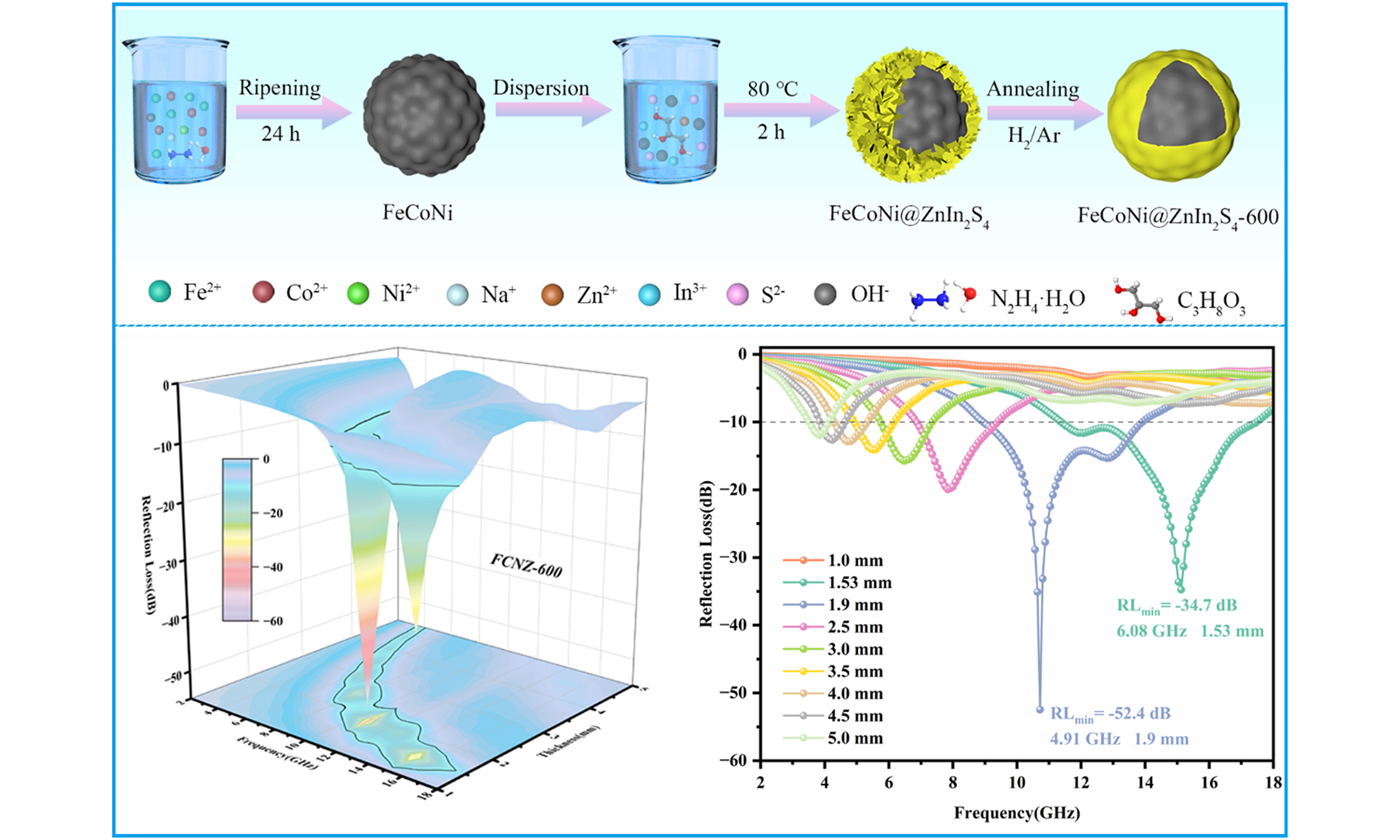
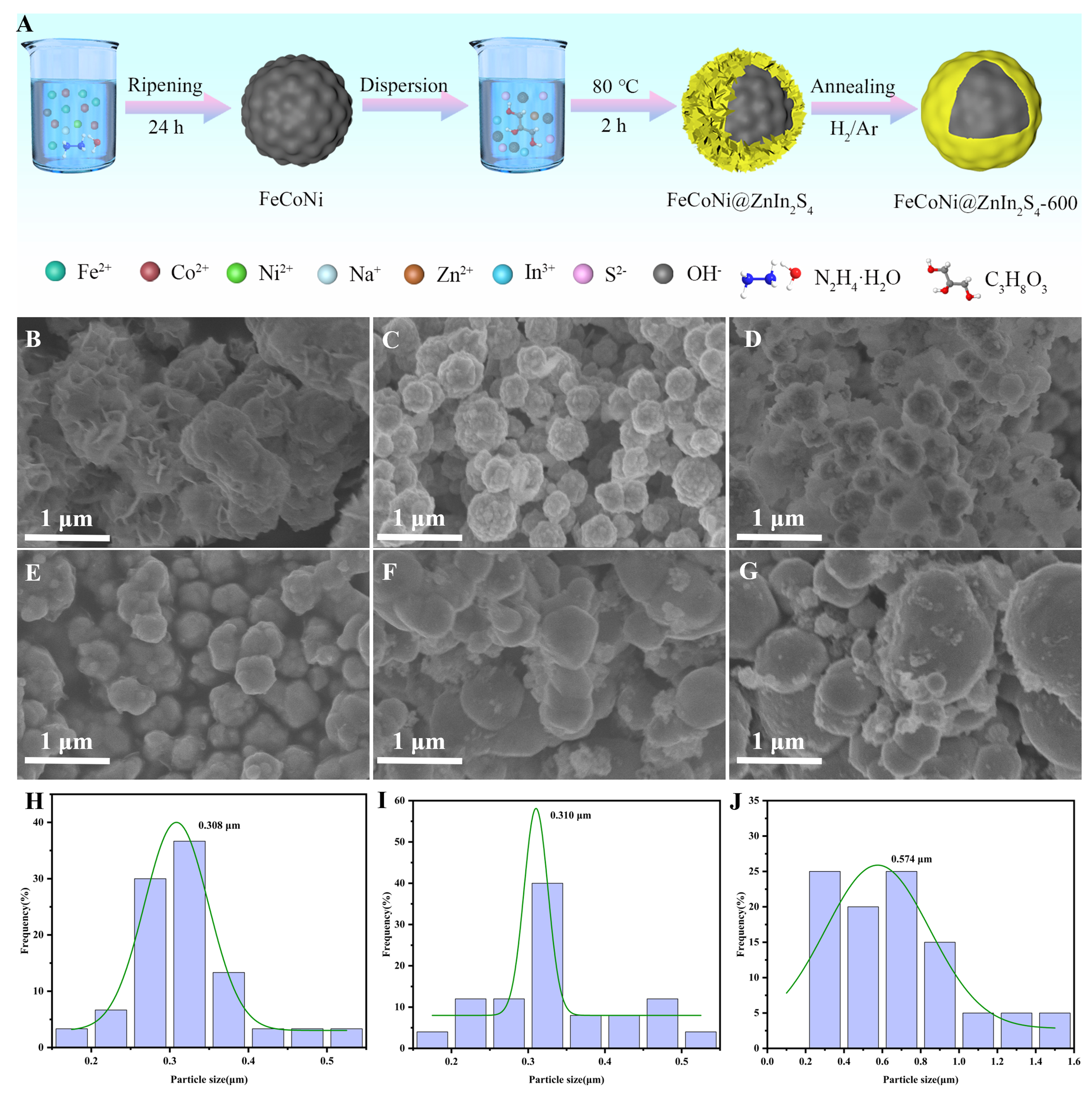
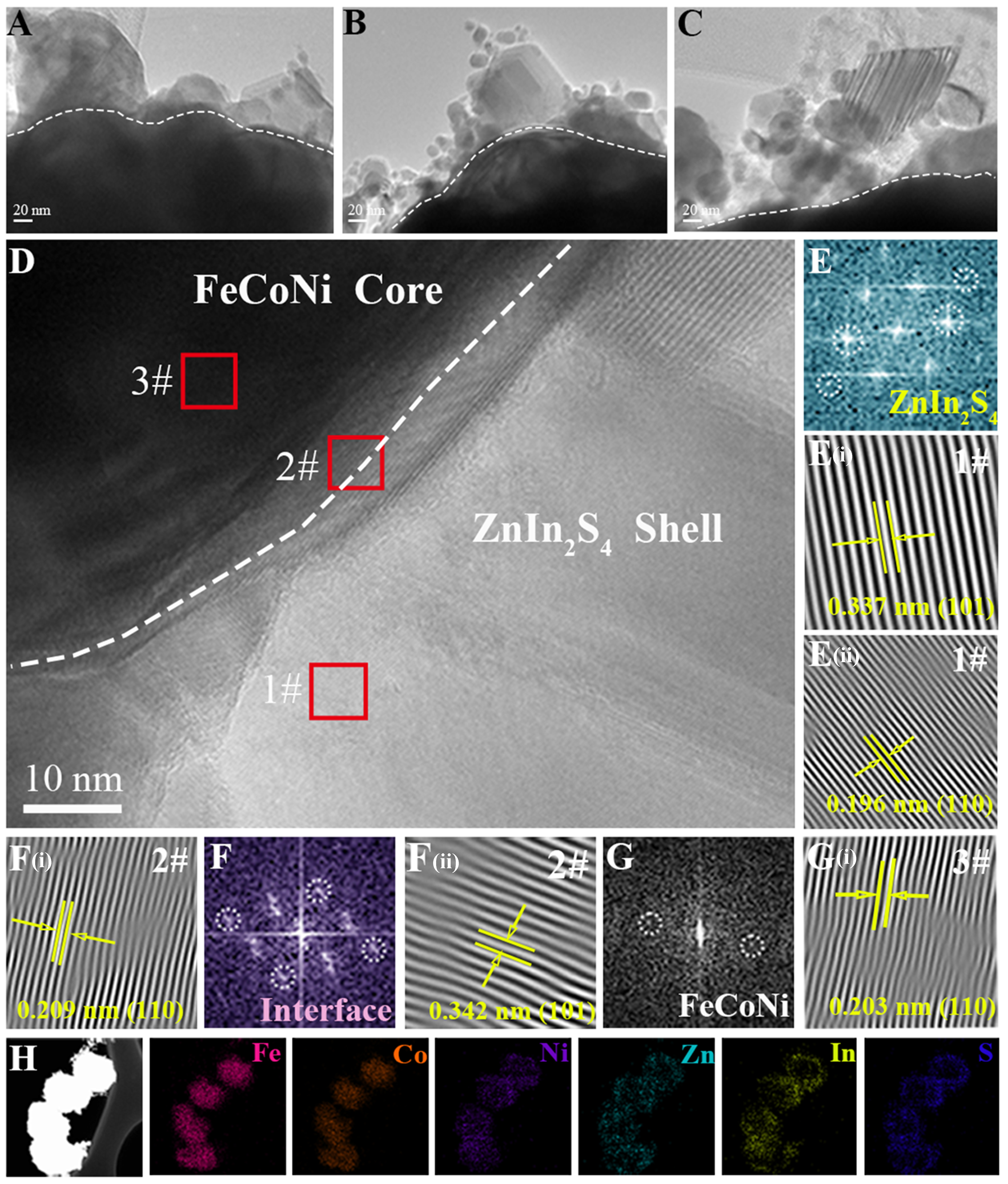
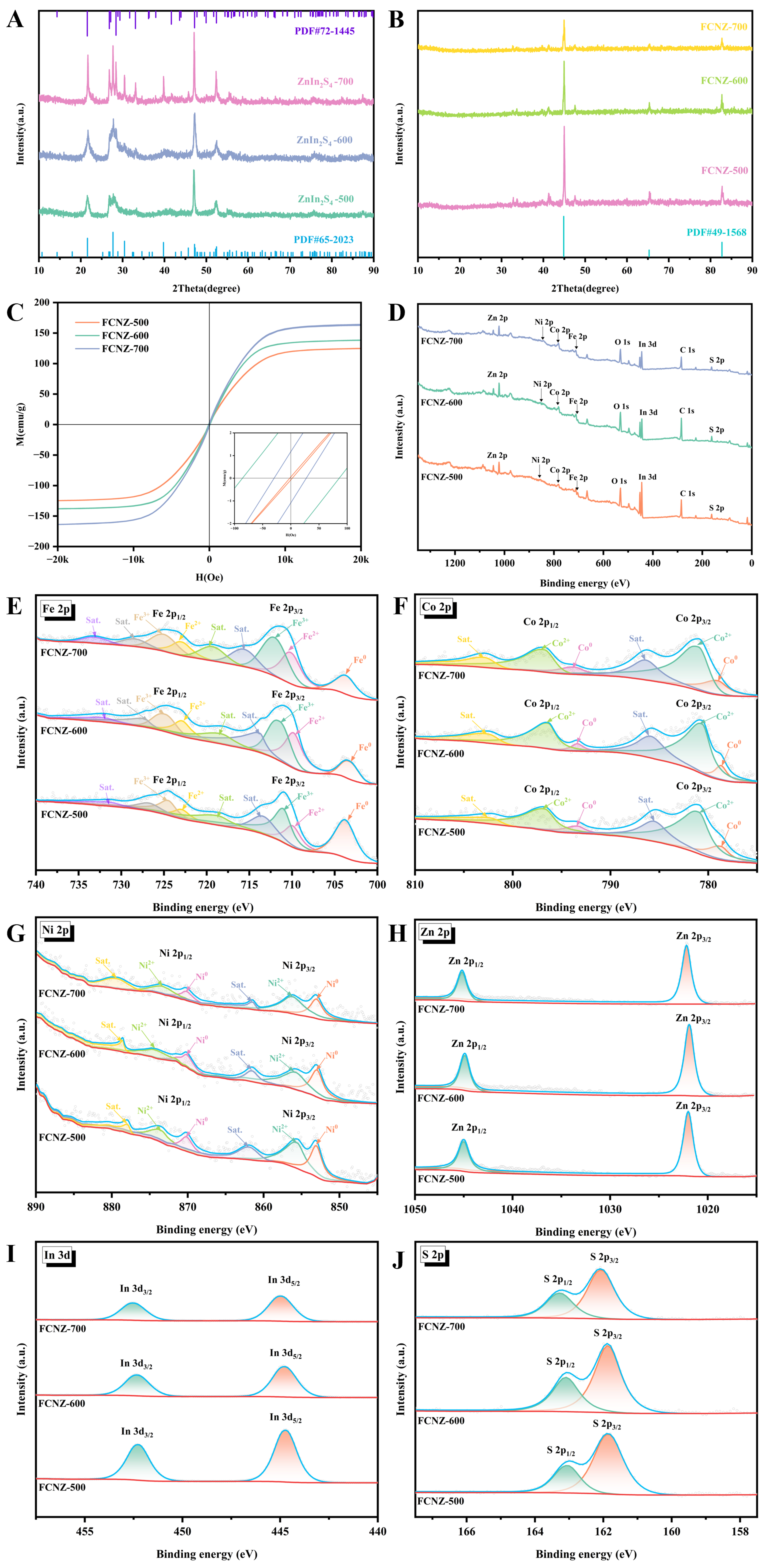
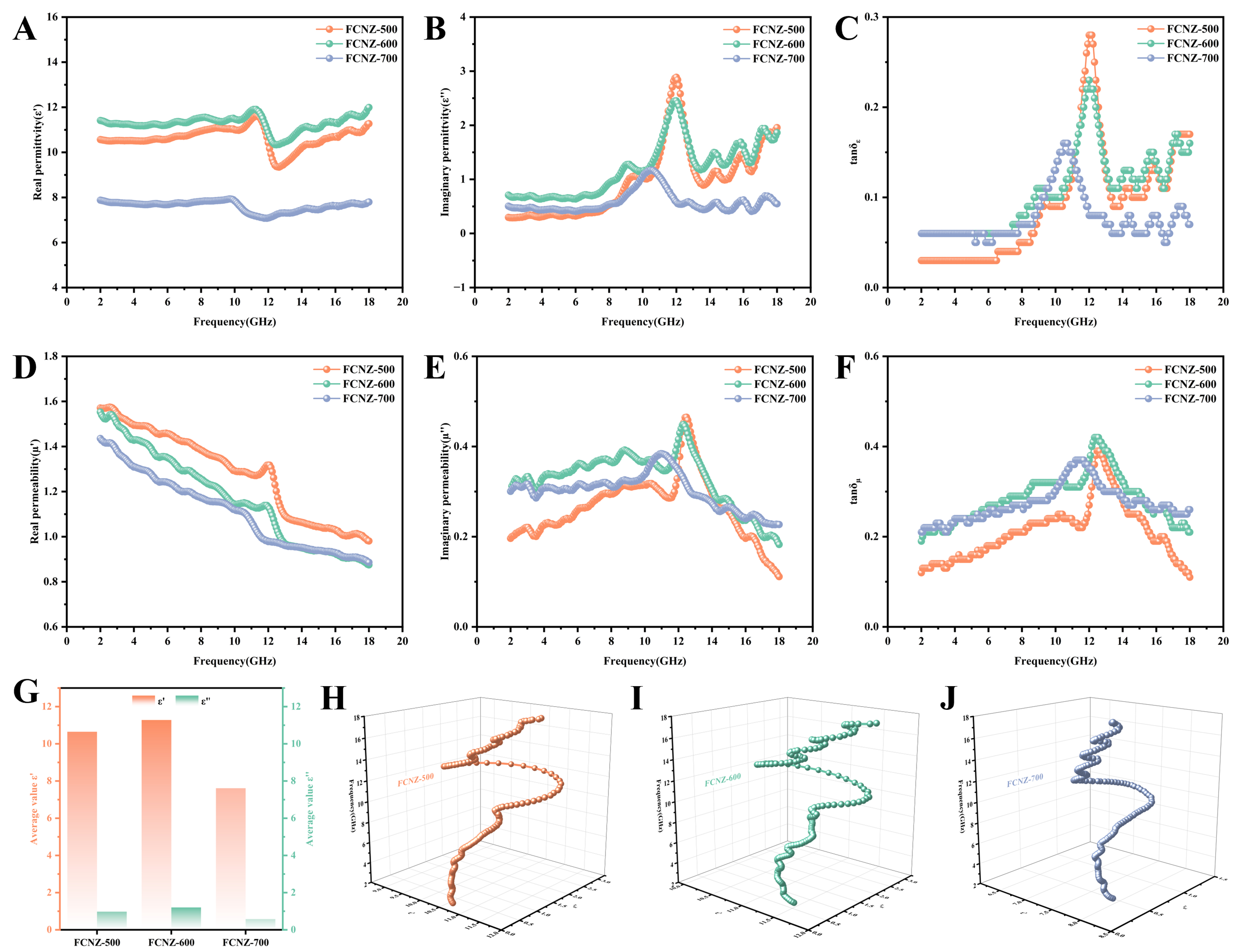
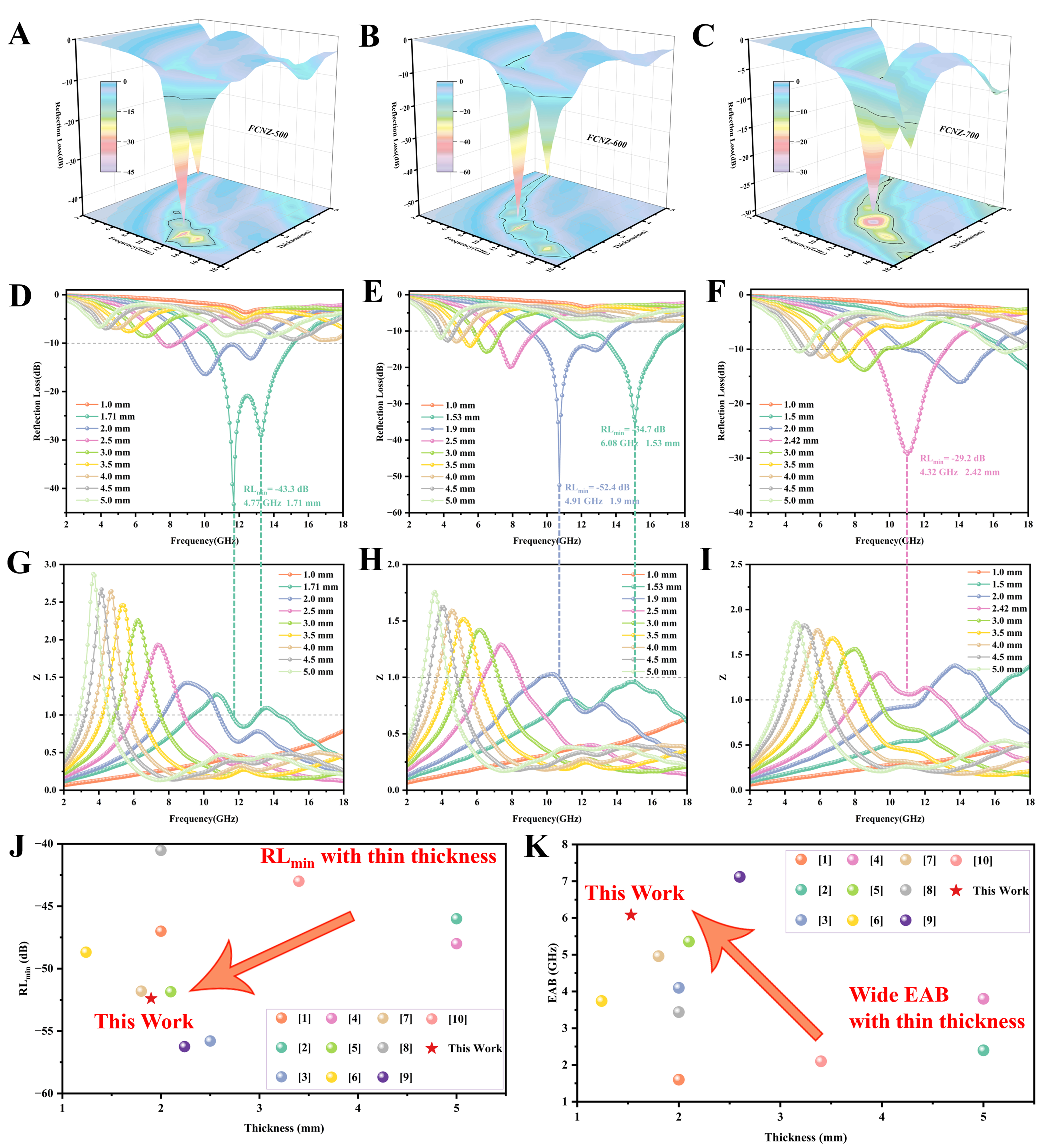
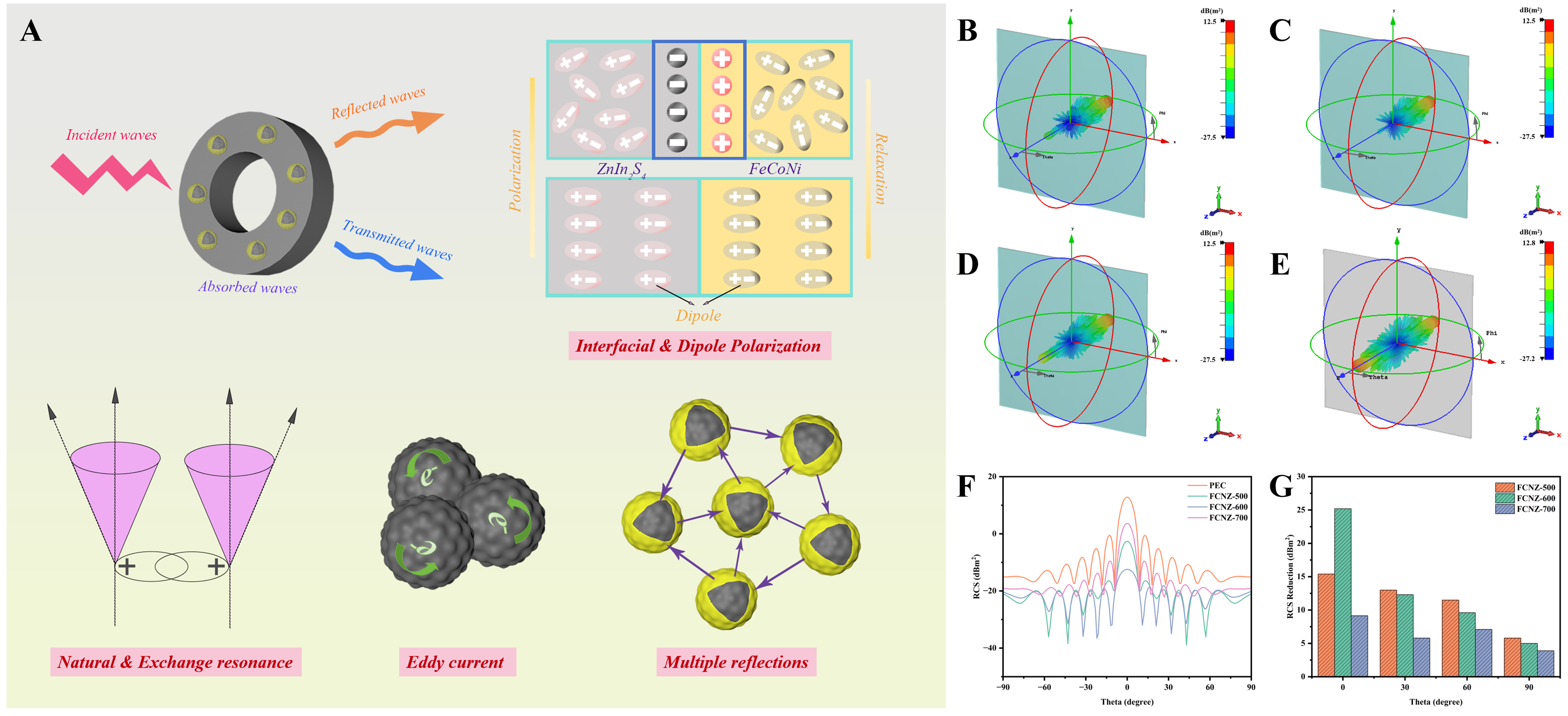







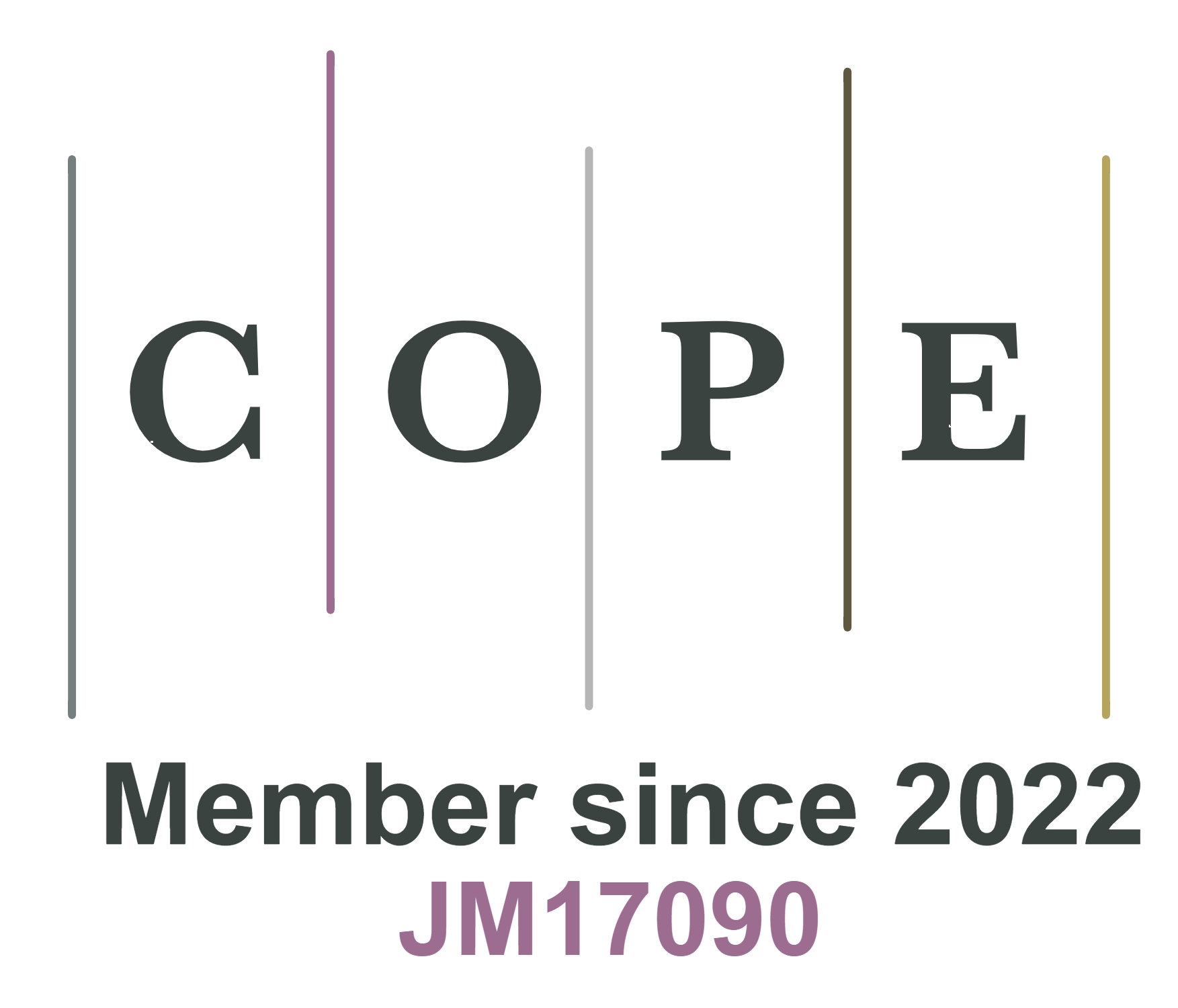




Comments
Comments must be written in English. Spam, offensive content, impersonation, and private information will not be permitted. If any comment is reported and identified as inappropriate content by OAE staff, the comment will be removed without notice. If you have any queries or need any help, please contact us at support@oaepublish.com.